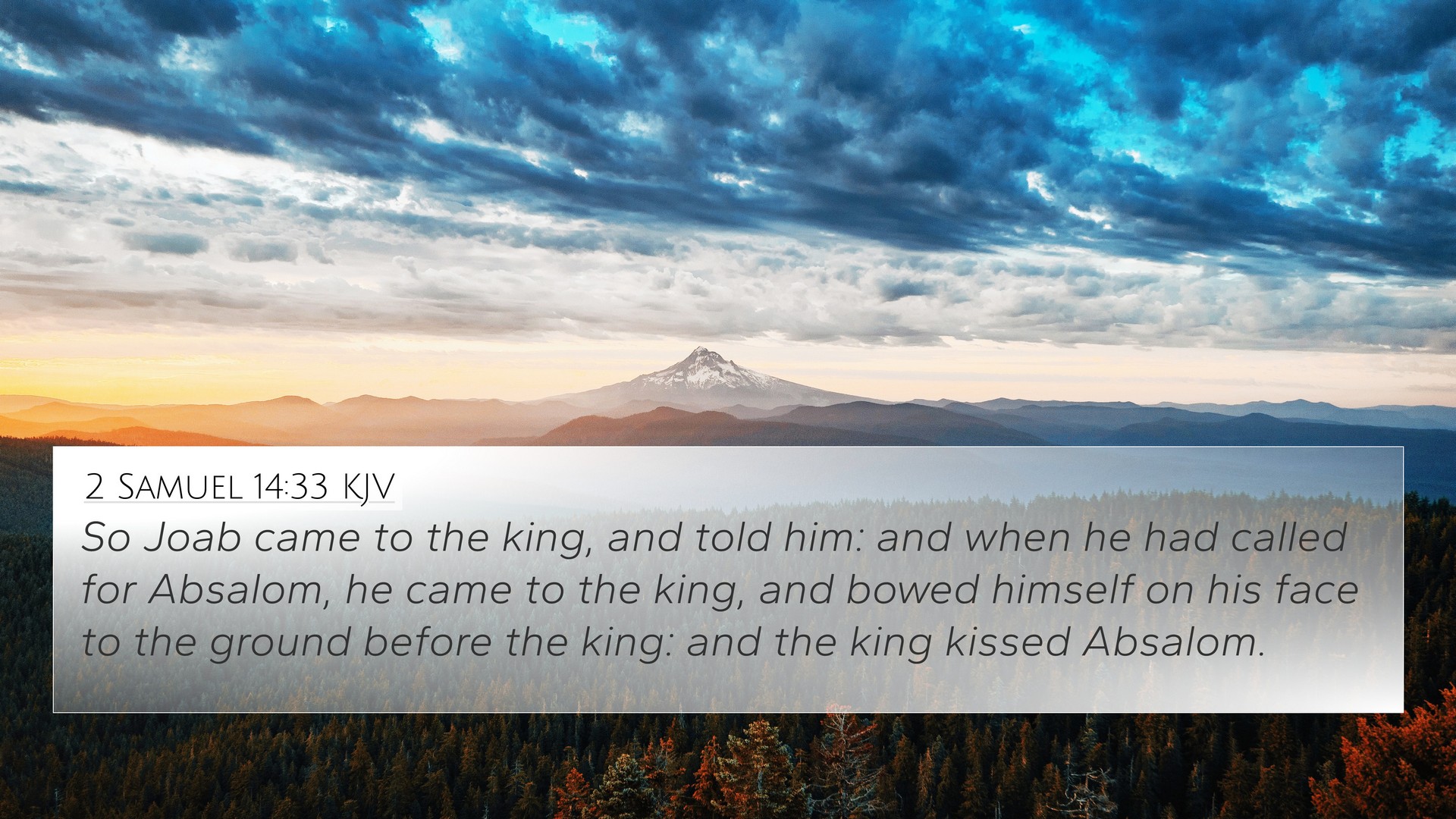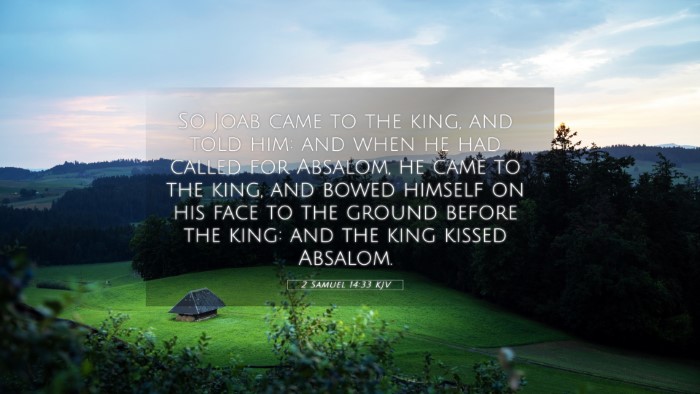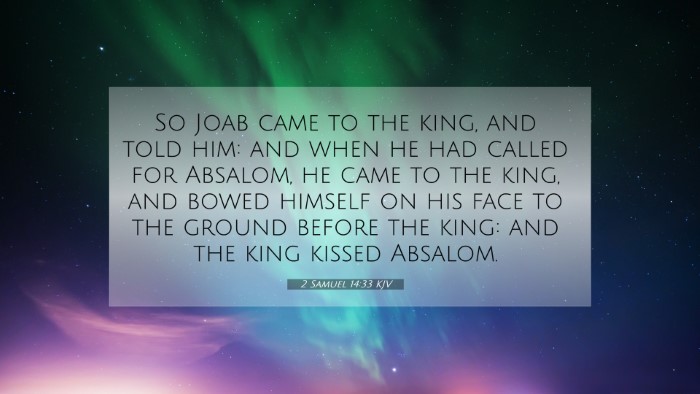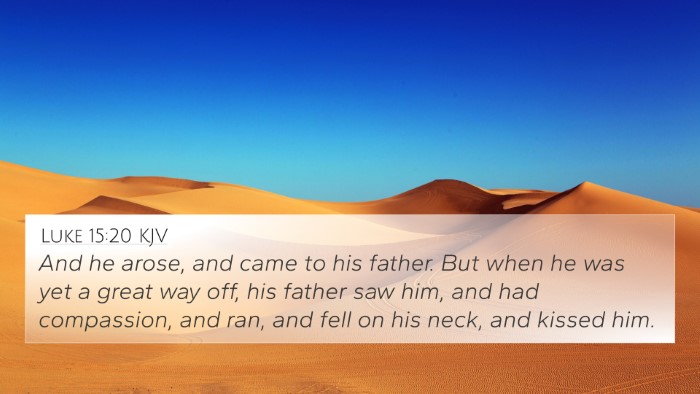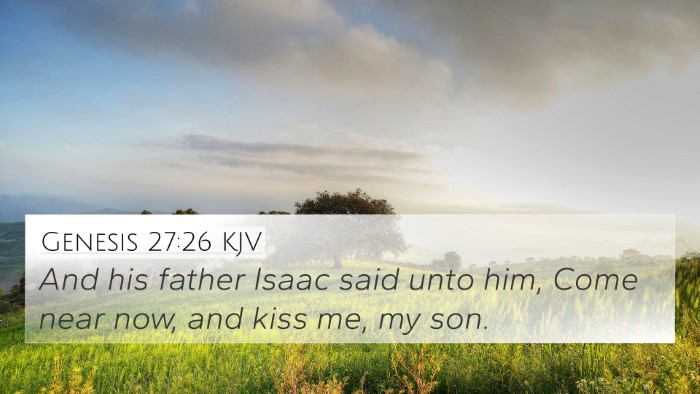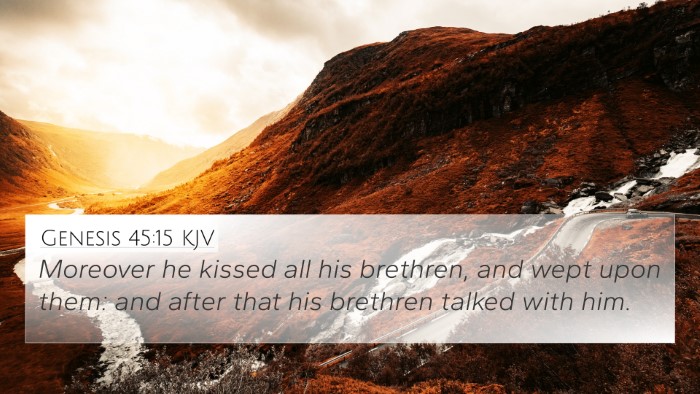Understanding 2 Samuel 14:33
This analysis of 2 Samuel 14:33 is drawn from esteemed public domain commentaries, providing a comprehensive look at its meaning, context, and implications. The verse reads:
"So Joab went to the king and told him. And when he had called for Absalom, he came to the king and bowed himself on his face to the ground before the king. Then the king kissed Absalom." (2 Samuel 14:33)
Contextual Background
This passage occurs during a crucial moment in the narrative of David's reign, reflecting themes of reconciliation and familial conflict. Absalom, David's son, had been estranged due to his actions against his brother Amnon and was finally brought back into the king's presence by Joab's initiative.
Commentary Insights
- Matthew Henry: Henry suggests that Joab's actions demonstrate wisdom and shrewdness. He notes the significance of Joab's role as an intermediary and highlights the importance of reconciliation between David and Absalom.
- Albert Barnes: Barnes emphasizes the physical actions of Absalom—bowing before the king—as symbols of submission and respect, marking a shift from conflict to potential restoration in their relationship.
- Adam Clarke: Clarke points out the emotional elements in play, particularly the father's love for his son juxtaposed with the political realities of the time. He notes that David's kiss signifies forgiveness and acceptance of Absalom back into the royal circle.
Thematic Connections
This verse can be linked with several overarching themes in Scripture:
- Forgiveness: David's kiss symbolizes a return to grace,highlighting the opportunity for reconciliation after wrongdoing.
- Father-Son Relationships: The dynamic between David and Absalom showcases the complexities of parental affection amidst conflict.
- Intercession: Joab's intercession serves as a reminder of the important role advocates play in resolving disputes.
- Political Maneuvering: The background of this reconciliation underscores the intricate nature of political and familial alliances in royal dynamics.
Bible Cross-References
For better understanding and deeper analysis, here are some pertinent cross-references related to 2 Samuel 14:33:
- 2 Samuel 13:28-29: Details Absalom's tumultuous relationship with his siblings, paving the way for his estrangement.
- 2 Samuel 14:1: Joab's clever strategy to bring back Absalom and the motivations behind it.
- Genesis 50:15-21: Joseph’s reconciliation with his brothers parallels the narrative of David and Absalom.
- Luke 15:20: The parable of the Prodigal Son: a father’s embrace of his wayward child mirrors David's acceptance of Absalom.
- Matthew 18:21-22: Jesus’ teachings on forgiveness deepen our understanding of the themes present in this narrative.
- Romans 5:10: Emphasizes the restoration of relationship after wrongdoing, applicable to David and Absalom.
- 1 John 1:9: A reminder of the need for confession and forgiveness in relationships, resonating through David's actions.
Tools for Cross-Referencing
Utilizing tools for bible cross-referencing can enhance our study and understanding:
- Bible Concordance: A comprehensive resource for finding related verses across the Scriptures.
- Bible Cross-Reference Guide: Systems or charts that outline thematic relationships between verses.
- Cross-Reference Bible Study: Methods that facilitate comparative analysis of correlated Scripture passages.
- Bible Reference Resources: Various tools available for deeper theological inquiry into connections between verses.
Conclusion
Understanding 2 Samuel 14:33 requires not only a close examination of the text but also a willingness to see how it interplays with the broader narrative of the Bible. Themes of forgiveness, reconciliation, and the complexity of familial relationships find resonance throughout Scripture, linking this verse to a rich tapestry of other biblical passages. Engaging in comparative Bible verse analysis and exploring cross-referencing Biblical texts will deepen one’s appreciation for these vital connections in God’s Word.
